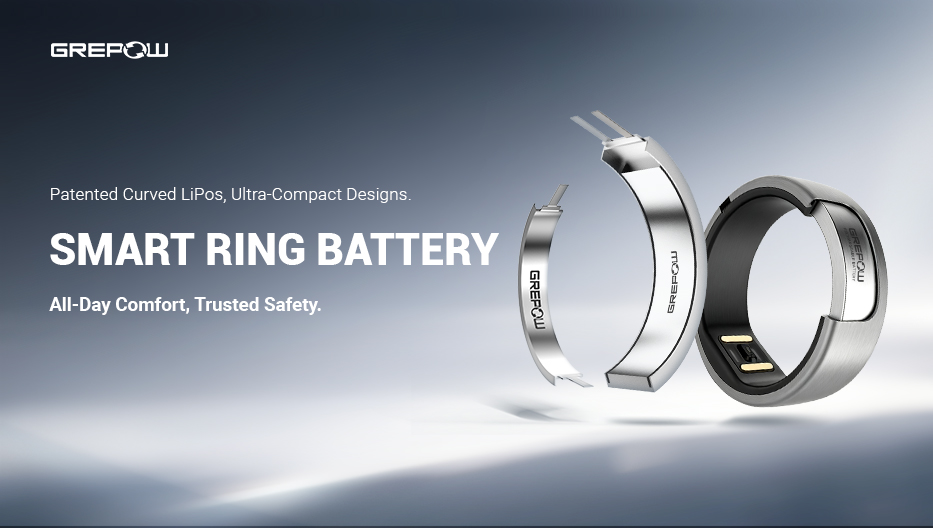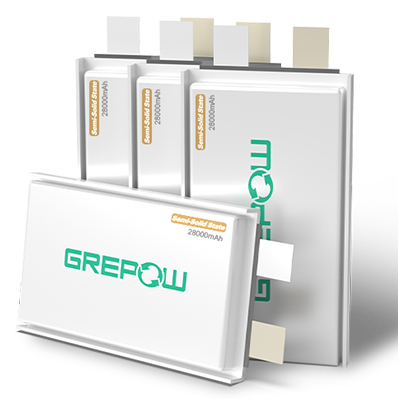What Is a Solid-State Battery?
As technology evolves, so do the demands for more efficient, safer, and durable energy storage solutions. One promising innovation on the horizon is the solid-state battery, a breakthrough that replaces the liquid or gel electrolyte found in conventional lithium-ion batteries with a solid electrolyte. This fundamental shift in design aims to significantly enhance the performance, safety, and energy density of batteries. By leveraging solid materials for the electrolyte, solid-state batteries promise to overcome many limitations of traditional batteries, paving the way for a new era in energy storage technology.
What Is a Solid-State Battery?
A solid-state battery is an advanced type of battery technology that replaces the liquid or gel electrolyte found in conventional lithium-ion batteries with a solid electrolyte. This significant change in the battery's internal structure aims to improve safety, energy density, and overall performance. Solid-state batteries are considered a promising innovation for various applications, including electric vehicles (EVs), portable electronics, and renewable energy storage, due to their potential for higher energy efficiency and reduced risks.

The Latest Solid-State Battery Technology and Challenge
Solid-state batteries operate on the same basic principles as traditional batteries: they store and release energy through electrochemical reactions. However, the key distinction lies in the composition of the electrolyte. Here are the latest technology and challenges of solid-state batteries’electrolyte:
Latest Technologies
1. Solid Polymer Electrolytes (SPEs)
Solid polymer electrolytes are composed of a polymer matrix with dissolved lithium salts. Recent developments focus on:
●Polyethylene Oxide (PEO): Widely studied for its ionic conductivity and flexibility.
●Polycarbonate-based Polymers: These provide better thermal stability and higher ionic conductivity at room temperature.
●Hybrid Polymer Electrolytes: Combining polymers with inorganic fillers to enhance mechanical properties and ionic conductivity.
2. Ceramic Electrolytes
Ceramic electrolytes offer high ionic conductivity and stability but pose challenges in terms of brittleness and interface compatibility:
●Garnet-type LLZO (Li7La3Zr2O12): Known for high ionic conductivity and chemical stability with lithium.
●NASICON-type (Li1+xAlxTi2−x(PO4)3): Offers good ionic conductivity and stability but requires careful handling to avoid moisture sensitivity.
●Perovskite-type Electrolytes: These materials (e.g., Li0.5La0.5TiO3) are studied for their high ionic conductivity and potential for high voltage stability.
3. Sulfide Electrolytes
Sulfide-based electrolytes such as Li10GeP2S12 (LGPS) are promising due to their high ionic conductivity and good interface properties with electrodes:
●Thio-LISICON (Li3PS4): Offers high ionic conductivity and the ability to form good interfaces with lithium metal anodes.
●Argyrodite-type Electrolytes (Li6PS5X, X = Cl, Br, I): Known for their high ionic conductivities and ease of processing.
4. Composite Electrolytes
Composite electrolytes combine polymers and ceramics to leverage the advantages of both materials, aiming to balance ionic conductivity, mechanical strength, and flexibility.
Challenges
1. Ionic Conductivity
Achieving high ionic conductivity at room temperature remains a significant challenge for many solid electrolytes, particularly polymer-based ones.
2. Interface Stability
Ensuring stable and low-resistance interfaces between the solid electrolyte and electrodes is crucial. Issues include:
●Lithium Dendrite Formation: Preventing the growth of lithium dendrites that can short-circuit the battery.
●Interfacial Degradation: Chemical reactions at the interface can degrade the electrolyte and reduce battery life.
3. Mechanical Properties
Balancing the mechanical properties of solid electrolytes to avoid cracking and maintain contact with electrodes during cycling is essential.
4. Manufacturing and Scalability
Developing scalable manufacturing processes for solid-state batteries that ensure consistent quality and performance is a significant hurdle.
5. Cost
Reducing the cost of materials and manufacturing processes to make solid-state batteries economically viable for widespread use is an ongoing challenge.
Solid-State Battery vs. Lithium-Ion Battery
Comparing solid-state batteries to traditional lithium-ion batteries highlights several key differences and potential advantages:
Safety
●Solid-State Battery: Solid electrolytes are non-flammable and can significantly reduce the risk of thermal runaway and fires, a known issue with liquid electrolytes in lithium-ion batteries.
●Lithium-Ion Battery: Liquid electrolytes are flammable, and under certain conditions, such as overcharging or physical damage, they can catch fire or explode.
Energy Density
●Solid-State Battery: Potential for higher energy density due to the use of lithium metal anodes and the elimination of bulky liquid electrolytes. This could translate to longer battery life and greater range for EVs.
●Lithium-Ion Battery: While advancements continue to improve energy density, they generally have lower energy density compared to the potential of solid-state batteries.
Charge/Discharge Rates
●Solid-State Battery: Can offer faster charging and discharging rates due to improved ionic conductivity and stability. However, this is highly dependent on the materials used.
●Lithium-Ion Battery: Current technologies allow for relatively fast charging, but there are limits due to the risk of overheating and capacity loss over time.
Longevity and Durability
●Solid-State Battery: Promises longer lifespan and better durability as solid electrolytes are less prone to degradation and dendrite formation (which can short-circuit the battery).
●Lithium-Ion Battery: Degradation over time, particularly with repeated charging cycles, can reduce battery life and efficiency.
Solid-State Battery vs. Semi-Solid State Battery
The development of solid-state and semi-solid state batteries represents significant advancements in battery technology, each with distinct characteristics and potential benefits. Both solid-state and semi-solid state batteries offer improvements over conventional lithium-ion batteries, particularly in terms of safety and energy density. Solid-state batteries represent a more radical departure with higher potential benefits but also face greater technical and manufacturing challenges. Semi-solid state batteries offer a more balanced approach, with moderate improvements in safety and performance, and are easier to manufacture at scale. Below is a comparison of these two types of batteries.
| Feature | Solid-State Batteries | Semi-Solid State Batteries |
| Electrolyte Type | Solid (ceramic,polymer) | Gel or highly viscous liquid |
| Safety | Very high | High |
| Energy Density | Very high | High |
| lonic Conductivity | Lower than liquid | Higher than solid, lower than liquid |
| Interface Stability | Challenging | Easier than solid-state |
| Manufacturing | Difficult | Easier than solid-state |
| Mechanical Properties | Brittle | Flexible |
| Cost | High | Lower than solid-state, higher than conventional |
Advantages of Solid-State Batteries
The adoption of solid-state batteries offers several significant advantages over traditional lipo batteries, making them an attractive option for future energy storage solutions:
●Enhanced Safety: The non-flammable nature of solid electrolytes reduces the risk of battery fires and explosions, providing a safer alternative for consumer electronics, EVs, and large-scale energy storage.
●Higher Energy Density: Solid-state batteries can potentially offer much higher energy densities, leading to longer-lasting batteries for portable devices and extended ranges for electric vehicles.
●Faster Charging: Improved ionic conductivity in solid-state batteries can enable faster charging times, addressing one of the critical challenges for electric vehicle adoption and increasing convenience for consumers.
●Longevity: The stability of solid electrolytes can lead to batteries with longer lifespans, reducing the frequency of replacements and lowering the overall cost of ownership.
●Wider Temperature Range: Solid-state batteries can operate efficiently across a broader range of temperatures, making them suitable for various environments and applications.
●Environmental Impact: Potentially reduced environmental impact due to longer battery lifespans and the elimination of toxic and flammable liquid electrolytes.
Conclusion
In conclusion, solid-state batteries represent a significant advancement in battery technology, offering numerous benefits over traditional lithium-ion batteries. While challenges remain in terms of cost, manufacturing scalability, and material optimization, ongoing research and development are steadily bringing solid-state batteries closer to widespread commercial use. The future of energy storage and power supply may well be revolutionized by the adoption of this innovative technology. If you have any questions or needs about our button cell batteries, please feel free to contact us at info@grepow.com.
Related Articles:
Solid-State Battery VS Lipo Battery: What’s the Difference?
Grepow Unveils Revolutionary Semi-Solid State Battery: Powering the Future of Commercial Drones
Semi Solid State Battery vs Lifepo4 Battery: What's the Difference?
Semi-Solid State Battery vs. Lithium-Ion Battery: What's the Difference?
The Leading Semi Solid-State Battery Manufacturers of 2025
Related Articles
-

Powering Aerial Artistry: Grepow Battery Solutions Behind Drone Light Shows
2025-10-27 -

Powering the Future of Wearables: How Grepow's Patented Curved Battery is Revolutionizing the Smart Ring
2025-10-16 -

Grepow Battery Announces Manufacturing Agreement with Powerbanc Group
2025-09-30
Related products
-

37000mAh Semi-Solid State High Energy Density Battery
-

35200mAh Semi-Solid State High Energy Density Battery
-

30000mAh Semi-Solid State High Energy Density Battery
-

28000mAh Semi-Solid State High Energy Density Battery
-

20000mAh Semi-Solid State High Energy Density Battery
-

17600mAh Semi-Solid State High Energy Density Battery
-

4200mAh Semi-Solid State High Energy Density Battery
















































